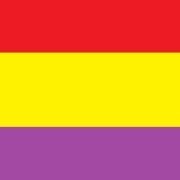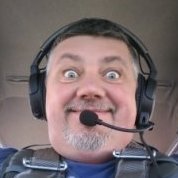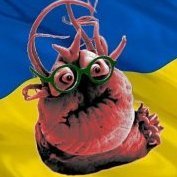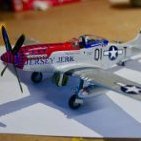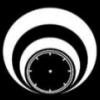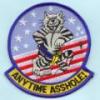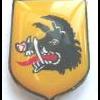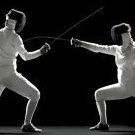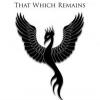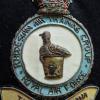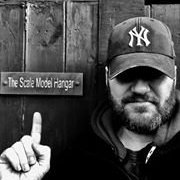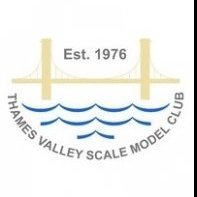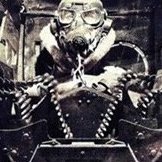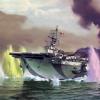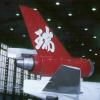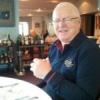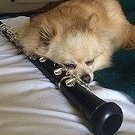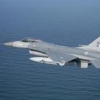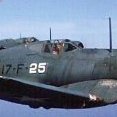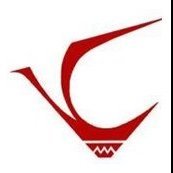Leaderboard
Popular Content
Showing content with the highest reputation on 28/07/17 in Posts
-
A cracking little kit from Airfix, the kit has been enhanced by using the Eduard etch metal detail set but most of it is in the cockpit and can only be seen by removing the middle section so I would recommend the kit highly straight from the box. Scale: 1/72 Manufacturer: Airfix Type: JU87-B1 Stuka, Condor Legion, Spain 1938 Extras: Eduard etched set, Aml camouflage masks Paints: Mr Hobby, rlm 65, rlm70, rlm 71, tamiya xf1, xf85, xf69, Tamiya flat clear, Revell aqua flat white Thanks for looking Jason22 points
-
Tamiya Do 335A Pfeil 1/48 - out of the box build, other than the Eduard etch (which was very cheap – like me). I completed this about a year ago and when I put it on Scalemates, it caused a minor kerfuffle because the exterior colours aren’t Tamiya/Luftwaffe/rivet-counter approved. As I've always thought the 335 as being a little bit 'Luft 46', so I decided to go a little off piste. I went with a lighter splinter camouflage and a light grey under-side. For no reason other than I wanted to – I’m not really that interested in historical accuracy (hang the heretic). My model, my rules. To one of the 'wrong colour' comments on SCM, I said that I would happily have painted it pink if I thought it would look good, and to amuse myself I did a quick photo edit to see what a Do 335 would look like in pink splinter camouflage. It looks a complete atrocity as you would expect, but I think Mattel are missing an opportunity to have a new range of 'Barbie's Third Reich accessories'. Gave me a giggle anyway (I think I might have too much time on my hands). Thanks for looking.18 points
-
The ICM kit is of the E-3 variant and is very well detailed kit, the cockpit in particular is full and impressive. Overall fit is superb and I encountered no problems. The one down side is the canopy which falls well short of modern standards, I replaced mine with a vacform one from Rob Taurus. The markings in the kit are not for the Spanish versions and I have used a set from Blue Star decals which I was kindly given by a member at my local IPMS club (South Somerset), I did use the stencils supplied with the kit. I also used Mr Paint for the first time with RLM 63, the paint was brilliant as most people are finding now but the colour is so similar to rlm 02 it’s hard to see the difference (which makes it quite accurate!). Gunze paints were used for the rlm 02, 70 & 65. I built this one as part of my IPMS SIG (special interest group) which I have started for the Spanish Civil War, have a look (and please join if it's of interest): Spanish Civil War SIG Had a bit of competition success locally as well which I was both surprised an chuffed! Thanks Jason17 points
-
A nicely detailed kit, with good fit overall. The main problem is in attaching the top wing which has very vague locating points. I managed to weld mine together with lots of super glue. The decals from Cartograph are very nice and behave well but the white and yellow are allowing the paint from the camo to show through quite a lot so that is a shame. Kit manufacture: Italeri Scale: 1/72 Type: CR.32 Chirri Extras used: Uschi super fine rigging thread, metal wire foot hold Paints and colours used: Tamiya custom mixes for yellow, grey and brown. Green dashes xf71 cockpit green. Flory dark dirt wash and Tamiya flat clear Military Aviazione Legionaria (Italian Legionary Air Force 1936-1939) Sqn. a. Aut. Mitragliamento Frecce 3-6 (Capitano Ferruccio Vosilla) Spanish Civil War, Munesia Spain, April 1938 Thanks Jason15 points
-
Hi folk's this is the first of my foray's into 1/32 scale for a while,I had the kit a year part started but the 109 GB took it off the shelf of doom and onto completion.It's a very nicely molded kit and apart from a little over engineering on the wing/wheel well assembly is pretty stress free build wise,I had a lot of help scheme wise from the usual BM suspect's and for that the WIP is worth a look. http://www.britmodeller.com/forums/index.php?/topic/235020774-revell-132-g10finished/&page=115 points
-
Being a newbie on Britmodeller (love it) re-visiting his youth, I’m just really getting going again on enjoying building model kits. With my Dad passing on, 10 years ago now, at some point we were going through 'his side' of the wardrobe and I found a couple of Airfix kits – one started and one untouched. There was a Westland Lysander, kit no. 02053 (2nd Tool) in the ‘11E’ packaging and a Spitfire Mk IX, kit no. 02081 in the ‘15C’ packaging - looking at the info on the Airfix Tribute Forum (love it), this dates the purchases as 1994 to 2005+. The Lysander had been started with the engine and propeller assembled and painted (paints, brushes, sanding stick in the box) – the propeller shaft ran very sweetly in the engine boss and rotated even with gentle movement through the air – I think there had been a bit of work done to achieve this. The wings were painted ‘on sprue’ and the pilot was also beautifully painted in RAF blue with yellow Mae West and brown flying helmet. I used to build Airfix kits when I was a boy (in the 60’s) and when I held a finished item up for inspection, (in the early days it could be unpainted with ‘transfers’ applied or latterly painted in approximate colours), my Dad would always say – ‘That’s a beezer, son!’ Just what a budding 10-year old modeller liked to hear! (What is a beezer? Being a Dundonian, I only know of the kids’ comic of the same name from DC Thomsons). Well, when I saw this started model, with a beautifully working propeller and a pilot champing at the bit, I just had to finish it, albeit spare time being zero. Over what must have been a couple of years at least, I put the Lysander together, continuing the night/spy mission version as started by Dad. I found that the camo upper surfaces and black undersurfaces already painted needed another coat and thought I would carry on and have a go at painting the canopy framing free-hand – looked OK until I started taking photographs so lesson learned there. I was however happy with how the wheels/tyres turned out and the neatness of boundaries of the different paint colours in general. The exhaust ring turned out a bit more bronze coloured than I expected. The decals were quite brittle and one of the tail flashes subsequently peeled off and disappeared – I replaced with a similar item from a Lancaster decal sheet – trimmed. I finished off with a coat of matt cote to hold it all in place. (First time I’ve done that). Just to go the extra mile, I added an aerial in black thread after looking at a recent ‘Aeroplane’ publication on Lysanders. Also, I found the time to work on the ‘JE-J’ Spitfire IX and have just finished that, after putting too much cement on the spinner which produced a sink mark, many touch ups of the .303 gun port covers and an attempt to remove the decal silvering with a ‘Future’ equivalent – great experience though and good support through tips from others on 'Britmodellers'. Did a photo session with some props bought for my son, now discarded in favour of the ever present i-phone, and created a gentle airstream with a hairdryer that sent the Lysander propeller into action - Lysander just landed and ready to pick up that ‘agent’. So, these are for you, Dad – I hope they are both beezers!14 points
-
Latest of the bench is the Classic Airframes Grumman Widgeon, in FAA markings. Nice little kit for a CA model. As it's a CA kit you just know there is a lot of filler in there . This is also a test for using Flickr....so here goes. Please feel free to comment etc. thanks for looking Dick14 points
-
Hi everyone, just thought I would show you all two builds I completed recently. These are the Supermarine Spitfire and the Hawker Hurricane, supplied in Airfix's amazing 75th anniversary of the Battle of Britain. These were absolutely cracking, not too many fit issues except I ran out of filler , so the fuselage of the Hurricane has a visible gap. The painting was simple, although I used my own paints instead of the ones supplied. The decals were also great. First, the Spitfire, of the 610 squadron: The stand that comes with the kit is quite nice, so I decided to do them in flight. Zoom-up on the fuselage, quite proud of the paint chipping! View of the underparts, although I think the weathering was a bit too strong here. After all, planes during the Battle of Britain didn't live long enough to be this dirty. Thoughts in the comments? Now for the Hurricane, this one from squadron 615: A bit disappointed with the machine gun streaks, they could be straighter for sure. Also the line between the fuselage halves is clearly visible on the last pic . Gotta get some new filler !!! Finally don't mind my very messy workbench. As for the other two planes, respectively a Bf109e and a Heinkel He111, I need to find some decals for the first (flown by Helmut Wick, can someone help me with this???) and I am waiting to buy an airbrush before painting the second. All in all, it was a fun and simple kit to assemble with, in my opinion a rewarding finished product. Please leave suggestions in the comments, as I've said before I am still in a learning process, especially for weathering and filling.10 points
-
Here's my 1/48 Hasegawa Hurricane Mk IIc built as Karl Kuttlewascher's Intruder aircraft. (I know I haven't added the red doped patches that are commonly illustrated - decided not to and reasoned that this is his machine the day before !) I added Ultracast exhaust , external fuel tanks and wheel wells, Eduard's photoetch belts, Squadron Vac canopy with plastic strip internal structure, brass wire handles, and exhaust glare guards made from brass sheet. Hope you enjoy, Colin Here's my Heard of Hurricanes so far ...10 points
-
Having given the stash a good staring at and having had a look through other peoples proposed builds and not wanting to duplicate others choices I have plumped for an aircraft I have liked for a long time, Dornier's classic Do-17Z, known as the "flying pencil" due to it's very thin fuselage. Although the Do-17Z was the version used by the Luftwaffe during the early phases of WWII it was rapidly replaced by more modern and capable aircraft such as the Ju-88 not long after the invasion of the Soviet Union, but for my build I will not be doing a Luftwaffe bird. I have long had an interest in the exploits of the Finnish Air Force during both the "Winter War" of 1939-40 and the "Continuation War" as Finland's involvement in WWII is known and have wanted to build a Finnish aircraft for a while and this GB has given me the ideal opportunity to build one it's aircraft, especially as the Scandinavian GB didn't get voted in. For my build I will be using ICM's recently released 1/48 kit of the DO-17Z which I will build pretty much OOTB. Here is a picture of the box lid. And the contents of the box, still sealed in the plastic bags. As I am not building a Luftwaffe example which is all that comes in the box (apart from a Croat flown one which has mostly Luftwaffe markings) I will be using an aftermarket decal sheet by SBS Models which has markings for 4 aircraft from the Finnish Air Force. And never being able to resist a winter camo scheme here is the scheme I have chosen. As I have roughly zero information on the DO-17 and it's use in Finland I will be building it as it comes so any useful help will be gratefully received, as will all your comments and criticisms during my build. Thanks for looking in. Craig.9 points
-
My first Starfighter build ever. OOB with kit decals. If you've never built a Hasegawa 104, it is a beautifully engineered kit. One of their best!8 points
-
afternoon folks thanks for all your kind comments - much appreciated & spurring me on to do better every time so, the last few days presented that golden opportunity to terminally screw things up, otherwise known as painting... ..anyone who has read my build threads will know I don't really like it as I find it really difficult to get right - in fact it's why I will probably only ever build NMF aircraft from now on! Anyways, the problem here is made worse by the fact that it's painting onto polished aluminium so paint adhesion is a particulay challenge, and with a lot of masking for cheatlines etc and also the need to polish the airframe afterwards sets a number of problems that needed overcoming.. I googled painting aluminium and etch primers and clicked on some links - one of which amazingly ended up being an automotive paint store about half a mile from my house! I packed up the Spit and went to see them for some advice. It wasn't the usual morning trade for them and I soon had an audience and a lot of useful help and ended up leaving with some clear etch primer and a couple of cellulose car colours matched to the grainy pics I do have of Race #80.. I tested these and the blue was great, perfect adhesion, took wire wool 'distressing' to get rid of the mask ridges and looked near enough in colour, the red though was the wrong colour and a sort of rubbery compound & lifted when masking removed.. Then I thought about enamels, so went to my local hobby store and bought EVERY blue & Red enamel & acrylic and set about trying to colour match again, as seen here, cars at the top, enamels at the bottom.. ..with all the work invested in getting the canopy & windshield made I was very nervous about spraying acid etch & paint all over the place so set about masking things up really tightly - I also prepared the Sp[inner & backplate as these are all blue parts too.. ..I sprayed the acid etch without issue, including testing diluting it with Mr Leveller thinner as it was really thick stuff, but it was with shaky hands as I just couldn't face getting this wrong & ruining the clear parts.. ..then I sprayed the chosen Humbrol blue colour match on all the parts - once it dried I knew I had an issue - it was basically Tesco blue - for those not in the UK that is quite a livid bright blue, rather than the darker blue in the Esso logo from an Aviation Oil can from the forties that I have as another reference point (Race #80 was sposored by Esso & Limited Oil).. .. I looked again at my paint stocks and chose an acrylic, and again had to test there was no reaction or anything horrible would go wrong in putting Tamiya acrylic on top of Humbrol enamel and sprayed again - all the time worrying I was drowning out rivet detail etc.. ..once that had dried it still didn't look right and it was a matt finish, so I tested future and Tamiya smoke mixed together to give a slightly darker tone and seal the surface in case adhesion wasn't great.. ..after all that, and having maintained my sanity (in part at least), I had a set of painted parts... ..the next thing was to weather the surface, and luckily again after testing I found the adhesion was good enough to set about it with wire wool in the direction of the airstream.. ..then the moment of truth - any leakage of the acid etch and I was basically doomed, so I peeled away all the masking and to say I was ecstatic at the results would be a 100% understatement.. ..the spinner also turned out well and I added the fixing screws & painted the prophub inside it.. ..with the blades added, I think it looks the part - I just need to learn how to carefully weather it without ruining it... ..I was so stoked that my childish efforts had not created a disaster that I put the lot together for a little cameo of what the airframe is beginning to look like.. I am off now for a very long lie down TTFN Peter8 points
-
8 points
-
Hello all, Here is my recently finished 1/48 Eduard Mig-21BIS in the markings of the Croatian Air Force. The build thread is here Extras used included a CMK resin seat and Model Maker decals. A note on these; they are awful. The shade of the grey is completely wrong and a lot of the decals broke up and did not fit to the model. I added some grey dry brushing to the check pattern on the tail and wings to try and darken it down, which it has done a bit, but it's not perfect and i'm not overly pleased with it. But it'll have to do. Beside my other Eduard Mig-21: Thanks for looking. Dave7 points
-
Another one of my pre airbrush kits and nice one to build as well and real joy to build. Built with hatch's open an one engine out7 points
-
All finished apart from a coat of mat varnish Have used as many colours as possible for some what if markings from the spares box . masked the spiral to my own desighn . IMG_0005 by Alistair Pearce, on Flickr Thanks for looking and in the fashion of Mottlemasters method of short endings ..............................................7 points
-
Dear all, Pictures of my completed 32nd scale model of the Fokker EV/DVII late WW1 fighter. This is the recently released kit by Mikro-Mir who have re-tooled this kit previously produced by Avis. Not a straightforward build (mainly due to vague instructions and each part having to be individually fitted to it's corresponding part) but was buildable none the less. Some good colour schemes in this kit - two WW1 versions and the two post WW1 versions. I liked Udet's postwar scheme but wanted to do a WW1 version so went for this particular scheme as it was beyond my brush painting ability to brush paint individual diamond patterns over the whole fuselage as was needed on the other WW1 scheme. Mostly built OOB with some very basic additions in the cockpit. I also pinned all the separate control surfaces and wing (to struts) as they did not look strong enough as they were. Constructive comments/critique welcome. Regards Dave6 points
-
Airfix 1/72 BE2C OOB, some eduard etch. painted in my normal mix of tamiya, xtracrylix and valljo paints. rigged with EZ line. lovely looking kit. Just the 1 picture. after the photobucket fudge up, i have started using flickr. seems ok so far. thanks forlooking6 points
-
6 points
-
There's that too, thanks John Gone is gone, afterall. With option 2, we run the risk of removing threads that people just haven't gotten around to fixing yet5 points
-
Just finished masking and painting the canopy, it's just placed in position at the moment: There's a fighting chance I may finish this before 6 August. Max5 points
-
Hello! Allow me to present my 1/48 HAF F-16C in special markings. This kit began life as a Revell F-16A. With a lot of fettling and many donations from Hasegawa and Tamiya kits plus an Eduard PE cockpit set, I finally cobbled together something that sort of looks like this: Here is my model, hope you like it. Darren.5 points
-
Am I the only person being driven to distraction by the fact that every time I try to look at an older thread, the pictures have been replaced by the Photobucket square of despair, making a nonsense of the contents which invariably refer to the pictures? If I had any hair left, I'd be ripping it out.5 points
-
So I do have a spitfire epic I should be doing but I have hit a big slump in my mojo! hopefully three lovely corsairs in the diverse livery of the RNZAF will get me back on track. i will be doing the tamiya, revel and academy kits so we can have a little comparison along the way. pics of kits and options to follow! Rob4 points
-
Just finished this Tamiya KGV with Pontos photo etch accessories. Subtle weathering used, maybe a little artistic license with the colours chosen?4 points
-
Hi all! Here is my latest work, and so far the only one this year It is a first prototype of famous Polish fighter PZL P.11. The prototype was marked as P.11/I, was left in natural colour of metal with differential shading clearly visible. Model is from great resin kit produced by Arma Hobby. It's really neat and building it is simply great. They have almost whole line of "PZL's" in their offer, check their site if someone is interested. Anyway, I hope you will like this rare bird Painted with XTREME METAL colours from AK-interactive. Cheers! Stanley4 points
-
As I am still waiting to get an airbrush and decals for a me109e flown by Helmut Wick (if you have info PLEASE let me know in the comments), I've decided to begin Airfix's new tool Stuka! The kit is an early Battle of Britain scheme, from the 51st Sturzkampfgeschwader. From previous reviews I've seen (and theres not many unfortunately), this is another great kit from Airfix, and having built the older one I must say the kit as a whole is much much better, and will definitely offer several hours of pleasure! Let me first say that the amount of detail is phenomenal! The pilots seat is offered with seatbelts, so I am going to attempt a more detailed approach to the interior. All thats been done for now but I have quite a bit of time ahead of me, stay tuned!4 points
-
This is a year 2000 re-release from Revell USA of the ancient Boeing 707 kit. Originally boxed as United Boeing 720 by Revell USA,its still the same old Boeing 707-100 from many decades ago. There had been some changes in the molds over the years;There are the depicted one that has no cabin windows and the cockpit has holes instead of a clear part ,smaller tail fin without antenna and the very early Pratt & Whitney engines. Later it was released with a clear part cockpit and the taller tail fin with the antenna included and the Pratt & whitney engines that were common on most of the 707s. When I started this kit,I planned to build it OOB with the decals included.As being a relatively new kit (2000) the decals looked great. But when I came to the stage of decaling the model,I soon found out that the decals were not as good as they looked...they completely dissolved into thousands of small pieces floating in the water.... As I already had some troubles with the kits fit,I didnt want to look for a repalcement aftermarket decal set,so I decided to use the Northwest Orient decals from my Minicraft 707-320. This also then included the change of engines to the later ones.Luckily I had a complete set in my spares box. As the Revell 707 more resembles a 707-100 with a shorter fuselage,I had to cut down the decals to fit on the Revell kit. I know its not 100% accurate,but this was more of a salvation job rather than creating a replica of the real thing. The coroguard panels and other details on the wings come from the superb Flying Colors Boeing 707 detail set and these decals cover up some of the blemishes The kit has some serious fitting issues esp.the two wing halves,who are a nightmare to get together and also the engines that won't really fit into the slots. Also the wings were seriously warped,probably they had been in a hurry to get the parts out of the moulds and into the shelfs... I have one more Revell 707 and I think I have to forget about building and painting each components before assembling the whole thing. The finished product is not of my usual standard,there are some flaws,esp. around the engine-wing connections.I didnt bother to fill the small gaps there as I would have to repaint the whole area,but overall it looks quite nice,and when its behind glass the flaws wont stick out much. Hope you like her anyway. Cheers,4 points
-
- FLOGGER G Trumper - 1/48 scale - Paint AKAN - Nose probe : Master - Landing gear : G FACTOR - resin landing gear well and missiles : Eduard BRASSIN Nose cone : Metallic Detail4 points
-
Having never built an all white metal kit before I had no idea what to expect. Would the castings be rough and require a lot of cleaning up? Would the fit be poor with vague placements? None of these concerns apply to this kit from SE Finecast, in fact I'd say that the engineering quality is equal to mainstream injection moulded plastic kits. The only problem I experienced was the fit of the bonnet, but I've had that problem with plastic kits too. A little about the car. Powered by a four cylinder 4.5L engine developing 100 BHP at 2800 RPM, capable of 85 MPH and considered to be one the best of the early sports cars. No decal are supplied in the kit. The number plates are made up from some left over from another build. No headlight lenses either. I had to cut them out from a small sheet of clear acetate (supplied in the kit), not easy. The same goes for the split windscreen. Thanks for looking, Steve4 points
-
Hi everybody, thanks for the comments! I feel better after a bit of food... It was now time to concentrate on the landing gears.This is what the nose one looked kike. I replaced the original shock absorber shaft with a longer one made of welding rod, as on landing, without the aircraft's weight it's fully extended.. I also drilled the landing lights, to add a bit of detail. I added some tubing and detailed the system driving arm. I also fitter a piece of tube in the main wheels,to increase the locating pins' size. So now it was time for some painting. As usual I started with black. Then white, the colour for the landing gears and wheels. Here's the nose gear and the main wheels after painteng and washing. This is what it looked like once applied to the model. So I concentrated on the wooden base.I marked the position where the wheels would have been. I painted the centerline a lighter grey, the shade of the first camouflage adopted for the Eagles. It's happened to me to see some fitted to aircraft, so I decided to choose this option for a little more colour. I also painted the flares dispencer red. I've seen picture with them painted wblue, red and white.I think this must be identifying different types of flares. I fitted the unpainted legs and wheels to the model to get the right alignment and I considered the angle I wanted , as they say you should never display a model parallel to the base... Then I drilled the holes and I tested the filling with the whels first... and later with the model.I was slowly getting there!!! This is what I was trying to represent. Enough for now! see you soon!!!4 points
-
May I present my 1/72 Mig-21, finished in the colours of the Hungarian Sky Huzzars aerobatic team, part of hungarian Air Force 1990. Thet were disbanded in 1997. Hope you like,as usual all comments and suggestions welcome.4 points
-
When they cancelled the TSR.2 When the TSR.2 strike aircraft was cancelled in 1965, the RAF decided to purchase the F-111k as a substitute. 10 were ordered, with an option for a further 100. However, that order was also cancelled because of costs and uncertainity. This left the RAF hanging, with no replacement for the obsolescent Canberra medium bomber. Hawker-Siddeley however came to the rescue, proposing a cheaper version of the P.1125 strike fighter, based on Hunter aerodynamics and capable of supersonic flight. Hawker-Siddeley aviation sold the RAF their P.1125 strike fighter. Equipped with twin Avon engines and able to carry conventional and nuclear bombs, as well as self-defence Sidewinders, the P.1125 was put hurriedly into service to make up the short-fall created by the cancellation of the TSR.2. The Model The model is a combination of a 1/72 Mirage IV fuselage with 1/48 Hunter wings and tail. The decal(s) come from a set intended for the Buccaneer. It was pained with a hairy stick.4 points
-
Hi Rom, The parts are slightly rough, which is to be expected considering that they are 3D printed. Having said this, they are of extremely high quality and will not require to much effort. I have already cleaned up the nose and it looks terrific. There are no lines on the parts but I will scribe them once they are in place. More work. It was now time for the final plug to be fitted to the tail. Once again this part has been nicely designed and is quite strong. The cut needed to be along the first panel line aft of the airbrake wells. Once I worked out where the cut needed to be made, I was left with working out how to mark it out. the fuselage is slanted and also curved, so normal dymo tape or straight edge wasn't going to work. I found that by placing a shim under one half, I was able to make the fuselage perpendicular to my workbench. This then allowed me to position a pencil at the correct height and rotate the pencil around the fuselage to give a line in the correct position. I then very carefully cut along the pencil line and separated each part. The front side of the part fits into the fuselage exactly, and accommodates the undersides of the air brake wells. Now the major parts of the conversion are complete. There are still many more small things to address, including modifying the cockpit, extension of the leading edges of the wing roots, sidewinder rails etc etc.4 points
-
Sensible policies for a happier solar system! Martian4 points
-
More work. It was now time to cut the kit up for the major join in the fuselage. Upon first inspection, the join looked a little complicated, but it was relatively straight forward. Here is how I did it. I drew a straight line on the centreline of the fuselage. Using dymo tape I then scribed the panel line that exists at the front edge of the main gear bay across to the centreline. This was deepend as per previous methods. I then marked out a line on the side of the fuselage ready for cutting Once the part was cut out of the fuselage and some minor locating lugs inside it were removed, the new part was slid into place. The topside, once again, a perfect fit. There is a large rebate engineered into this part, both top and bottom to allow for a large amount of strength in this join. The new tail fillet. Notice that the rudder on the kit has a straight bottom edge, whereas the new part is kinked where it will meet the rudder. The new part fitted, with a suitable modification made to the kit rudder. The small locating lug on the bottom of the rudder is accommodated in the new part which has a hole that locks into it. The tail fillet also requires some modification of the rear lip of the fuselage Dry fitted.4 points
-
Looking excellent, yer Lordship. A real milestone! The curled door bottoms look just the ticket, too. Well, I found Black Books funny. And Father Ted. I nearly choked to death watching more than one Father Ted episode. Hear hear! I second that! Or Mrs Slocum and her cat in 'Are You Being Served'. Now there was a show simply drowning in double entendres Much like my Proxxon thingy, but much cheaper, I specs We had the 'Loys' truck come around in Adelaide - very similar to 'Corona' but they also had in addition to the above, 'ginger beer' and 'raspberry' (the latter in place of 'cherry', I think), and 'pineapple'. But not the creaming soda. And the Baker and his horse and cart, when I were very small. I remember poppy-seed crescent rolls that occasionally were given to me by the driver - a great treat! The milkman similarly came to the door - but I only remember the van. Bread as well was home-delivered, but you had to be quick before the cats got it. They particularly liked the unwrapped unsliced brown loaves, partly, I suspect, because they were unwrapped... Oh, and we had a 5c then 10c deposit (for inflation) on drinks containers in South Australia - a great way of making pocket money stretch out. It guaranteed that the place wasn't littered with drink bottles and cans. This has recently spread to the rest of the country, I believe (only took 50 years or so...). Cheers, Alex. <-- not a drink bottle or its deposit4 points
-
Thanks for the kind comments After looking at both versions together I also think the chronological version works better. I'll try to replace the Sunderlands for the tinted version. I think TheBaron is right regarding the gradation of tones this new version will provide. Hopefully, it'll be ready by the weekend. Cheers Jaime4 points
-
Hi Guys, Unfortunately I experienced some problems with my laptop’s software after cleaning and cancelling my surfing records and thus I couldn’t answer or post anything. Everything seems back to norml now, so…here I am!!! I left you with a piece of masking tape sticked to the inside of the canopy (…of course! Why stick to the outside, where anybody can remove you with no problems???) I’l start the canopy adventure since the beginning!!! First of all…Nice seam, guys! Really well done!!! I had to make it a little foggy to keep concentration!!! Same treatment for the wind screen. …then some real polishing… And a bath in Future. Until here, no problem, but then catastrophe struck!! There was only one option… removing the canopy!!! Tiny little sweetheart!!! Back to …fresh air!!! Once removed, wind screen and canopy were given a second chance….some scuba diving in alcohol… …and back to the Future! …better than before!!! Some black paint avoided the clear thickness effect to appear. Then I passed the wind screen onto the black to make sure the clear thickness of the cacopy was invisible. Now the canopies are back, but there are a few issued still to be dealt with. Now I’m falling asleep…. I’l have to go to bed!!! Next update Tomorrow, sorry!!!4 points
-
First round of chipping done; this one to make sections of bare steel show through the yellow. The weathering at this stage is deliberately overdone, because all of this will be covered with green - only a little bit will show once the second phase is done. Happy so far; in that final shot you can even see the "steel" shining on the front wing. C4 points
-
The red wing tank? Could be something I remember from basic training. Phenolic resin, the basis for Bakelite. the time period is about right. The protective finish in red? probably PX-7. I remember seeing it in tubes but I believe it also came in tins for brush application.4 points
-
Funny thing about the Britannia, I always thought it was an ugly aircraft. I saw them twice in Australia, once as a teen a British Eagle example overflew us on the Geelong road as it was on short final at Avalon airport then many years later as an ATC at RAAF Pearce when a RAF example paid a visit.. Then I saw G-AOVF at Duxford and I thought it is not ugly, not pretty but "handsome" as one might describe a slightly imperfectly proportioned female face. Then I saw the RAF example at the RAF base whose name eludes me and I was hooked, I had to get me a model, in 1/72 a hard to find vacform is the only game in town. I still have to do the nav lights on this and blow me down if one of the HF aerials didnt pop out of the fuselage which needs to be repaired. It will not fit in my cabinet on its wheels I will have to make a stand for it and put it in a slightly banked position to make it fit. 1P4A0096 by wallycacsabre, on Flickr 1P4A0091 by wallycacsabre, on Flickr 1P4A0083 by wallycacsabre, on Flickr 1P4A0097 by wallycacsabre, on Flickr oh I have to do the prominent pitots as well !3 points
-
Mission accomplished ! That guy with the white Aston Martin is fantastic ! Hope that it is almost the same than before... Sincerely. CC3 points
-
That sounds to me like you were simply demonstrating a free-market interpretation of a perpetual motion machine Tomo. I have taken the liberty of contacting the Nobel committee and apprising them of your achievements in the field of economics. Recognition can still be yours! Thank-you! Bearing that ominous news in mind I have been taking things very very carefully and thoughtfully this evening Martian. (That's not a laugh about your Ark btw Crisp, which I hope recovered from its Martian tendresse). I imagine they're one and the same Ced. Not to be confused under any circumstances with the hair-dryer... Get yourself some fizzy pop and dive-in Alex! Cresta! Brilliant! Like a chemistry set you could drink. First up tonight I am fresh from a hallucinatory experience. No. I didn't put too much nutmeg in the bread and butter pudding but a Druid friend of ours who keeps bees blessed us with this rather large jar: Hive-fresh honey. No feeding sugar-water to the bees here - this is the pure uncut stuff straight from the nectar. The deep sweetness of it is indescribable, except perhaps by some 17th century metaphyscial poet... A quick report first on the results of last night's gluing: The port side is absolutely fine, whilst the starboard: - fine also, save for right at the top there where it curves round the wing root. I've since sliced the join carefully just at that point and popped the vacform back into alignment with the curve of the root, securing it with a drop of CA. Tome to removing the festoons of Tamiya tape that have been draped over this for weeks and have a look at the clean new shape: There's a slight dip upwards visible at the bottom where the vacform and kit meet - I'm going to have a more more controlled look at that over the weekend to see if it is to do with the curve of the lower corners of the fuselage needing a little filing, or whether a bit of filler is required to level the dip. Otherwise there seems to be very little filler and filing needed around the join between vacform and kit on the exterior. Remember there were some insides for this once? I can't recall how long ago it was since they featured here so I put the deck in to get an idea of how it goes with the new rear section: With the corrected profile to the rear fuselage now you can clearly see where the original 'G' variant floor needs to be built outwards to parallel the new line of the walls at the rear of the aircraft. Same for the ceiling as well later on. More by luck the judgement the length of the new vacform section at the back is correct to the millimetre, and matches deck exactly: Look how battered those wall details have become from all the rough handling though - more boneyard than bon voyage at the present time. Plenty of tidying to do there... Using the doors I'd glued temporarily onto the respective sides of the BT last night, I firstly scribed the required outline deeply with a sewing-machine needle, and then gently and progressively sliced around those lines with a scalpel, as you see here about halfway through the process: Once through on the sides and bottom, the shape could then be popped out without damaging the BT: The frames need a little smoothing around the edges but I bunged one of the doors in the starboard BT to show the eventual fit. I'm off now for another teaspoon of the amber stuff. Baron Honeymonster.3 points
-
As I explained above, I used Humbrol Klearfix to fix the new transparent parts. The join had to be re worked on , as there was a bad step now, so I added bid by bit some of Mr.Surfacer 500 with a small brush several times, sanding it smooth and repeting this operation until I was happy with the result. The canopy frame had been replaced on the original aircraft at this stage of its life and this helped a bit , as it would have looked a separate item anyway. Now a quick step back: I had started with the exhausts, by using those supplied with the model , with the addition of the PE parts. After some painting , whashing and drybrushing, this is what they looked like. Now I had to start thinking about the future...as I said, the model would have been represented in landing mode and I needed some pins to make sure it wouls stay nose up. As I had already done in the past I decided to use three points to fix it to the wooden base: the main wheels and the centerline tank., so I drilled some holes and added some welding rods, to be used as location pins. That's all for now! Time for something to eat!!!3 points
-
Hello Dears Let's use the "clothes" of the belly cancers, really sympathetic girls indeed to replace the curtains. I come back with the karcher for cleaning up the place. For the BLU, don't remember how 'd we get it... Should we turn it for the Percy's monument ?? Is there important to say that the napalm is in ?? Or lease it to our tentacled friend for warming a bit of his dear planet ?? Well, well, well. Nice job for the Whirlwind, Dear Spad, Hope that the weather is fine and you enjoyed your camping. Have a very nice day Sincerely. CC3 points
-
Here is another Halifax with 2 turning: what are those posts on top of the wings for? Jari3 points
-
Thanks alot guys. More work! Time for the razor saw to make an entrance. This conversion requires some pretty careful cutting of the kit plastic and it can either be an easy process or a hard process. The key is not to over complicate things. The GR.1 fuselage bottom, thinking it was going to have an easy life.... The conversion calls for the insert to be placed along a panel line that is quite prominent on the side of the fuselage, but doesn't extend around to the bottom. I placed some dymo tape, lined up with both sides of the fuselage panel line. This was then lightly scribed with my Trumpeter scriber, before being deepend with the tape removed in preparation for the razor saw. Some time was spent working out how to tackle the top cut over the spine as it is a compound curve and would not conform to conventional straight edges. I found that drawing a line with pencil held at the right height whilst the fuselage was rotated around it worked the best. I then used the razor saw to carefully cut the deepend panel lines until the part separated. The fuselage plug dry fitted to the kit part. Pretty bloody good. The next part to be fitted was the large fuselage bottom with the all important missile wells. I measured the rebate I divided the first measurement by 2 (rounded up to the nearest .05mm) and marked out a line either side of the fuselage halves. This was then scribed and deepend as per before, along with squaring up the edge of the wheel bay and extending it to the long lines. Nice straight cuts of some pretty big pieces. I reckon a JLC razor say will be mandatory if you are going to be building this conversion. Some small locating lugs needed to be removed to fit the part. The reward for the precision measurements and cuts was that the new part virtually clicked into place. The modified forward fuselage. Some filler will be required here and there but overall, very pleased with the progress.3 points
-
As I said in my previous post, I wanted to try a different technique than : primer, pre-shading , camouflage and postshading, so I opted for a black base . As I’m not the most patient man in the world, I couldn’t wait to see if it worked or not, so…..I had a go with both greys.I really enjoyed this part of the work as you’ve got full control of the shade you want to reach and you see it changing under your eyes. Itt’s really difficult to overspray as it often happens with pre-shading. Rather than spraying one color first, I dido ne wing first until I liked the final result and moved on along the aircraft.I know most of you won’t like it, but that was real fun! My tidy working place…the kitchen table! I was going to represent aircraft 156, as I had a few pictures taken by myself. Initially I waned to represent it in this configuration , as I spotted it in April 2014. It had a nose from an E, painted Ghost grey. I tried it,but then I decided to represent it in another period of her life, when other parts had been replaced and were clearly visible. The main features of that configurtion were the following: · Lighter grey airbrake without dorsal patch of dark grey. · Both tailerons light grey with no patch. · Left intake light grey only. · One of the tail fins wore an uncomplete black and yellow stripe on the vertical fins. The underside shows clearly the final effect, while for the top side things got a little slower. It’s really starting looking like an F15!!! Good night!!!3 points
This leaderboard is set to London/GMT+01:00

